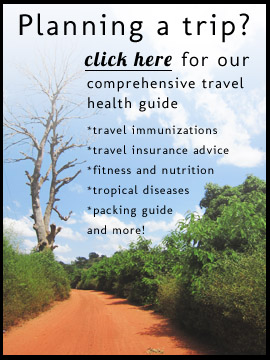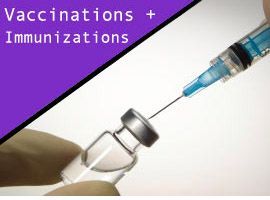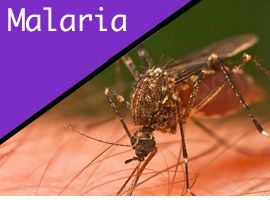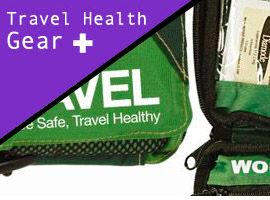Trip planning can be daunting, especially when it comes to travel health. This comprehensive resource page will make it easier. It covers all the basics in step-by-step fashion while also linking to more detailed articles if you want more information.
1. The travel health consultation
We are not doctors here. Before traveling, you should visit a doctor at a travel health clinic to have a consultation about your trip. On this page, we cover many of the same subjects that will come up during that consultation and we believe there is a lot of helpful information here. But consider this information a prelude to your conversation with a doctor.You will be more informed for reading this site, but it doesn’t mean you should skip the doctor’s visit.
You should plan on visiting a travel health clinic at least two months before your trip (this would be ideal, anyway). This will give you enough time to get any immunizations you may need and to start taking any medication that may require pre-trip dosage (certain malaria prophylactics, for example).
2. Travel health insurance
You need a travel insurance policy before traveling. It doesn’t matter whether you are traveling for 5 days or 100, whether you are visiting Canada or Somalia — accidents can happen anywhere and you can get sick at any time.
 As we have written elsewhere on the site, we strongly recommend World Nomads because they offer strong medical coverage, their customer service is light years ahead of most other carriers, they have an easy to use online interface that allows you to quickly extend a policy and/or file a claim, and they offer packages that cater to different kinds of travel (adventure travel, for example). It also helps that they are highly affordable.
As we have written elsewhere on the site, we strongly recommend World Nomads because they offer strong medical coverage, their customer service is light years ahead of most other carriers, they have an easy to use online interface that allows you to quickly extend a policy and/or file a claim, and they offer packages that cater to different kinds of travel (adventure travel, for example). It also helps that they are highly affordable.
If you want to read more about our experience using World Nomads, please see our review here.
Whether you go with World Nomads or not, there are a few things that you want to look for in any travel health insurance plan:
- Adequate medical coverage – You want a plan that is going to step up to the plate if you need it. Look for at least $100,000 in medical coverage, and several hundred thousand more at least if evacuation insurance is included.
- Evacuation coverage – If you need to be evacuated to a medical center that offers a higher quality of care, you will be looking at the largest chunk of your medical bill unless you have coverage for it. Make sure this is part of your plan.
- Reliable underwriters – Many travel insurance companies are not the actual underwriters of the policy. In other words, there is another company that is providing the money when you need to be reimbursed for your medical bills. Companies are required to disclose their underwriters and you can do a simple search on the name to get a sense for their reliability (by looking at the testimony of people who have used them).
- Good customer service – You want a company that will promptly respond to questions and claims. The coverage may be good on paper, but if your claim gets trapped in a mess of bureaucracy, you will have many regrets.
Before you take out a travel insurance policy, check to see if any coverage is offered by your current health care provider. In some cases, you may be covered for certain things if they happen while you are traveling. Also, you may be able to use your current health insurance for pre-travel expenses, such as immunizations, which we will cover in the next section. For further reading on travel health insurance, we have a series of articles here.
3. Travel immunizations
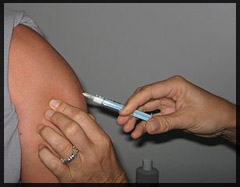 If you wanted to throw caution to the wind and skip all immunizations, you could actually find yourself denied entry by some countries. That’s because there are a number of countries that require certain immunizations just to cross the border. Of course, in addition to required vaccinations (if there are any), there are always recommended vaccinations that should be considered just as important. Getting immunized before travel also provides many people with a chance to make sure they are caught up on routine vaccinations, some of which they may have neglected over the years.
If you wanted to throw caution to the wind and skip all immunizations, you could actually find yourself denied entry by some countries. That’s because there are a number of countries that require certain immunizations just to cross the border. Of course, in addition to required vaccinations (if there are any), there are always recommended vaccinations that should be considered just as important. Getting immunized before travel also provides many people with a chance to make sure they are caught up on routine vaccinations, some of which they may have neglected over the years.
A travel health doctor can tell you exactly what you need for your destination(s). Again, you should not skip this important step of pre-trip planning. Before you visit the doctor, however, you can have a look at a comprehensive post we wrote on travel immunizations. Included in that post are tips for finding affordable immunizations (they can be quite expensive in some cases) and links to stories from other travelers who talk about their experiences with travel vaccinations.
On a personal note: we have been traveling for for years and we always make sure our vaccinations are up to date. While on the road, you meet people who have taken a different approach (not getting vaccinated) and in some cases, it has led to extended hospital stays and flights home. You do not want to find yourself with Typhoid during your relaxing beach vacation. It will hurt even more to know that you could have avoided it with a brief trip to a travel health clinic.
COVID-19 Vaccinations
Getting vaccinated for COVID has become a prerequisite for travel to many countries in 2022. Some countries may even require a booster shot (or more than one booster). Countries that do not require vaccination may still require a negative PCR test result, which typically needs to be no longer than 72 hours before travel to the country. It is important to see the latest guidelines for the country you will be visiting as well as the airline itself.
Beyond the laws and requirements, getting vaccinated falls under basic responsibility and duty of care. We are privileged to be able to travel and visit other countries. We should tread lightly when it comes to the environment but also to public health. The importation of disease marks some of the darkest periods in human history. Getting vaccinated does not ensure that you will avoid infection or stop the transmission of COVID, but it certainly helps considerably.
4. Malaria
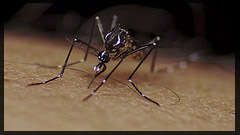 Despite the fact that malaria is not endemic worldwide, there is good reason for it to be this high on our list. In terms of disease, malaria poses perhaps the greatest threat to the traveler (at least those travelers spending time in affected areas) as it is potentially lethal and there is no vaccination available, only prophylactics.
Despite the fact that malaria is not endemic worldwide, there is good reason for it to be this high on our list. In terms of disease, malaria poses perhaps the greatest threat to the traveler (at least those travelers spending time in affected areas) as it is potentially lethal and there is no vaccination available, only prophylactics.
We have devoted many posts on the site to malaria, but before linking to specific articles, here are a few salient points to keep in mind.
- Malaria is not the same everywhere – strains of malaria vary by location. The strain that is commonly found in certain parts of Cambodia might not be the same strain that can be found in West Africa. Some strains are more dangerous than others, but all should be considered potentially fatal if left untreated. We have written about this extensively in our malaria section.
- There is no malaria vaccine – while there is ongoing research that may prove promising, for the moment there is no malaria vaccine. There are, however, prophylactics that can provide a high level of protection. We have talked about whether you should or should not take prophylactics here, and we have also discussed the pros and cons of each prophylactic here.
- There is a lot of misinformation about malaria – some people think malaria can be prevented by drinking tonic water. Some people think that malaria stays with you for life. We address many of the myths and facts about malaria here.
- Even if you take prophylactics, you should have a treatment option on hand – While unlikely, it is possible that even with prophylactics, you can come down with malaria. This is why you should have a treatment option on hand, especially if you are in a rural area far from a clinic. For more on malaria treatment, see our article on the subject here.
For some more detailed reading on malaria, including a discussion of both prophylactics and treatment, please see our malaria headquarters here.
5. Disease prevention in general
When it comes to illness on the road, the average traveler is most likely to be afflicted by relatively pedestrian maladies: the common cold, flu, and food borne illnesses that usually manifest in the form of traveler’s diarrhea.
Much of the content on this site is devoted to preventing food borne illness and indeed, there are intestinal diseases that can be much more severe than your average case of traveler’s diarrhea (see amoebic dysentery and giardiasis for two examples). But in general the principles of disease prevention are the same:
- Drink purified water – whether it’s filtered and boiled, bottled or treated with a chemical agent, make sure you drink water that is purified. Head over to our section on water purification for everything you need to know, including resources that will help you find out if the tap water is safe to drink where you are traveling.
- Peel it, cook it or wash it (well) – when it comes to food, disease prevention is also relatively straightforward. With respect to fruits and vegetables, make sure that it is cooked and served hot or that it has a protective exterior (a banana for example, which also happens to be one of your best friends for rehydration and overall health). Alternatively, fruits and vegetables can be rendered safe to eat if they are soaked in a diluted bleach solution. Provided the drinking water is clean, washing with soap and water is also a viable option.
- Wash your hands – perhaps the most important tip of all, if you want to give yourself the best chances of avoiding not just food borne illness, but all diseases in general, wash your hands. And do it the right way. Alternatively, you can use alcohol based sanitizers or better yet, alcohol based hand-wipes.
It can be difficult to know if a restaurant or food vendor has adopted good hygiene practices, but the popularity of the spot is generally a good indicator. If a lot of people eat there, especially locals who are more likely to know their way around, then it is also likely that the food won’t make you sick.
Other things to consider when it comes to disease prevention: getting enough rest and not overdoing it (unfortunately, people have a tendency to be overly ambitious with their itineraries), eating well, staying active, staying hydrated and yes, we’ll say it again, washing your hands!!! Washing your hands is especially important before and after eating and using the bathroom, and it’s also important when spending a lot of time on public transportation and in public places.
6. Travel health items to bring with you
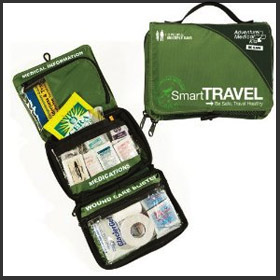 To start with, you will want to make a list of current medications that you take. You should plan on bringing enough for your trip and then some, just in case. While there are pharmacies worldwide and you will likely be able to find your medication wherever you are, you might not be able to find a specific brand.
To start with, you will want to make a list of current medications that you take. You should plan on bringing enough for your trip and then some, just in case. While there are pharmacies worldwide and you will likely be able to find your medication wherever you are, you might not be able to find a specific brand.
Next, you will want to make a little travel health arsenal that will cover the basics. This would include the following items (some may be more particular to certain destinations and again, we cannot stress the importance of having a travel health consultation to spell out exactly what you need to bring):
- A basic first aid kit – one that contains the essentials, such as antiseptic cream with a topical antibiotic, a variety of band-aids (aka plasters) and gauze, a topical steroid such as hydrocortisone, a painkiller (preferably one with anti-inflammatory properties like ibuprofen), and a thermometer.
- Any medications you are prescribed to – you will likely be able to find most medications while you are abroad, but it may be difficult to find the particular brand you use. The safest bet is to travel with your own clearly marked supply.
- An oral antihistamine – a medication like Benadryl fits the bill. You want something that can combat an allergic reaction if you happen to have one. More on this here.
- A probiotic – while this is more optional than some of the other items here, we’ve come to think of them as a valuable part of our travel health arsenal (see our post on probiotics here).
- A broad spectrum antibiotic – travel health doctors often prescribe an antibiotic like ciprofloxacin, which can be used in instances of bacterial GI infections. Antibiotics like cipro require a prescription and you should talk with your doctor to see which broad spectrum antibiotic is best for you.
- Alcohol based hand sanitizer or hand wipes – personally, we prefer the hand wipes as they can help you get the dirt off as well.
- A multivitamin – multivitamins aren’t going to pack the same nutritional punch as fresh fruits and vegetables, but they will give you a boost. This can be particularly useful if you are traveling in a part of the world that has limited dining options.
- Bug repellant – depending on where you are traveling this item may not be needed. We recommend several products towards the end of this post.
- Other items – your travel health doctor may make additional recommendations. For example, if you are traveling to an area where malaria is endemic, you will most likely be prescribed to a malaria prophylactic.
We cover a lot of our must-have travel health items in this post if you want some further reading and recommendations.
7. Eating well and staying fit on the road
Eating well may not be as easy as it sounds. If you are in a part of the world where there are few local vegetables and everything is deep fried and monochromatic, chances are that your nutrient intake will be very low. There are a few strategies you can use to maximize your nutritional intake. We’ve outlined some of them here.
You may find that staying fit and exercising is just as difficult. Keep in mind, however, that if you use your legs as your primary mode of transportation you will be putting in some exercise everyday. If you feel as if you are not getting a sufficient cardio-vascular work out from your walking, and you are too timid to bust out your running shoes, you can always do a hotel room workout, such as the one outlined in this New York Times article.
Plane travel
Oh yes, plane travel, how could we forget. A plane is more or less a pressurized flying desert. Throw in long flight times, and you have all the ingredients to get run down and possibly ill. Of course, flying when you are already sick is a completely miserable experience. We’ve got you covered, though:
Myths and facts about germs on airplanes
Sick on a Plane: Tips for Minimizing the Misery
How to Stay Healthy on your Flight.
Other travel health considerations
Your destination may have other travel health concerns that are not outlined on this page. You may discover that your destination has a number of bizarre diseases like schistosomiasis and hookworm. In some places, the sun may pose a far greater threat than it does at home (see our post on preventing sunburn).
You may also have to deal with certain personal health conditions that make travel difficult. For example, those who are traveling with allergies or with conditions such as heartburn may expect a more complicated or challenging trip.
Once again, going to a travel health doctor will help you understand all of the travel health issues that are associated with your destination and they will help you negotiate your own health issues that may be a factor. While this guide takes a broad look at travel health planning, the doctor’s visit will help you zero in on your specific destination.
Additional research
In addition to reading this page (and the rest of this site, hey!), there is additional research you can do to prepare for your consultation. The CDC Travel Health website lets you plug-in your destination country and then provides a substantial amount of concrete information that can help you in your planning. In addition, the World Health Organization website provides up to date information including outbreak reports and travel warnings.
Photo credit: flickr user unk’s dump truck and Sanofi Pasteur, wikipedia


